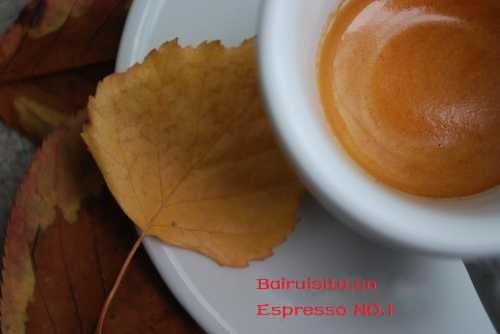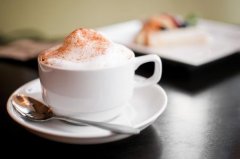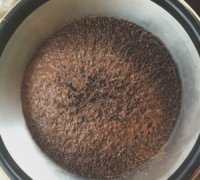Methods of making and tasting Italian espresso
Today, the students in the coffee class have entered the training of the espresso course. In the course, I prepared two kinds of selected espresso for the students. In Brista, we named these two classic espresso combinations: Italian No. 1 and Italian No. 2. In the baking classroom, students will need to mix raw beans to carefully hand-select, this is a very important teaching link, students can intuitively identify and screen defective beans. The selected raw beans are blended according to different proportions, and then carefully baked by the chief coffee roaster of the college. After the beans are cultivated, we taste and test collectively, so as to correctly taste the flavor and taste characteristics of the concentrated Espresso.
Unlike other drinks, the visual assessment of coffee is not based on its transparency, concentration, or nuances of liquids. However, the appearance of the brewed coffee can provide us with useful information about the quality of the coffee brand and the brewer's technology. This explains why coffee cups and spoons, though opaque, can tell us the most important message: milky foam.
The main purpose of this assessment is to arrive at:
Color, especially concentration and nuance.
Stickiness, relating to the texture of milky foam.
Persistence, the time for the emulsion foam to dissipate.

The color of the foam mainly comes from the caramelized sugar during baking and partly from the oxidized phenol during baking. If Arabica coffee is mixed, the color or nuance can turn dark yellowish brown into dark yellowish reddish and light yellowish brown stripes.
If it is underextracted coffee, it will appear beige; if it is over-extracted coffee, it will be reddish brown. If you use Robusta, the foam will be darker and have a gray shadow.
The consistency of emulsion foam is mainly determined by proteins, fats, polymer sugars and other sticky substances emulsified by gases in plant cells. In the preparation of coffee. These ingredients also affect the duration of the foam, which sometimes remains on the inner wall of the coffee cup when the coffee is finished.
A good espresso has a compact, well-textured, long-lasting foam a few millimeters thick.
This is not just a proof of quality, there is a later sense of smell and taste, it is also critical to the preservation of the direction of the coffee, allowing the aroma to be retained until the coffee is finished.
First of all, the fat in the coffee prolongs the process, which allows the taster to taste it carefully. All this is possible because the aroma components of coffee reach the olfactory mucosa from the back of the throat.
When we smell coffee directly, we can evaluate the intensity and concentration of coffee aroma, roasting intensity and fineness. We can judge good smells and bad smells by the back of the throat.
The unpleasant smell is caused by defects in raw coffee, improper roasting or final improper brewing. The good smell is the feeling we can perceive, thanks to the good quality of coffee beans and the good skills of all operators in the production chain. There is also a strong personal evaluation, which can be described as the good feelings of a good espresso.
Important Notice :
前街咖啡 FrontStreet Coffee has moved to new addredd:
FrontStreet Coffee Address: 315,Donghua East Road,GuangZhou
Tel:020 38364473
- Prev

Nine problems that need to be paid attention to in how to make good milk foam in coffee machine
One: [steam requirements] the use of steam to get rid of foam combined with the rapid production of ESPRESSO, it is precisely because of these two points that espresso coffee can be popular all over the world in a short time. So what kind of steam do we usually have for the foam? the stable amount of steam in ① is the most important point, and the large and small steam is often just that you can't beat the foam.
- Next

Relationship between Coffee Grinding, Coffee extraction ratio and concentration
In the coffee training class, the exchange, discussion and summary of extraction are in full swing. The following is the teaching summary of the trainers in our school. Coffee extraction is like doing an experiment, controlling the change between solvent (water) and solute (coffee) under environmental variables. How to dissolve the effective substances in coffee according to demand under appropriate conditions is the tireless work of all coffee lovers.
Related
- Beginners will see the "Coffee pull flower" guide!
- What is the difference between ice blog purified milk and ordinary milk coffee?
- Why is the Philippines the largest producer of crops in Liberia?
- For coffee extraction, should the fine powder be retained?
- How does extracted espresso fill pressed powder? How much strength does it take to press the powder?
- How to make jasmine cold extract coffee? Is the jasmine + latte good?
- Will this little toy really make the coffee taste better? How does Lily Drip affect coffee extraction?
- Will the action of slapping the filter cup also affect coffee extraction?
- What's the difference between powder-to-water ratio and powder-to-liquid ratio?
- What is the Ethiopian local species? What does it have to do with Heirloom native species?

